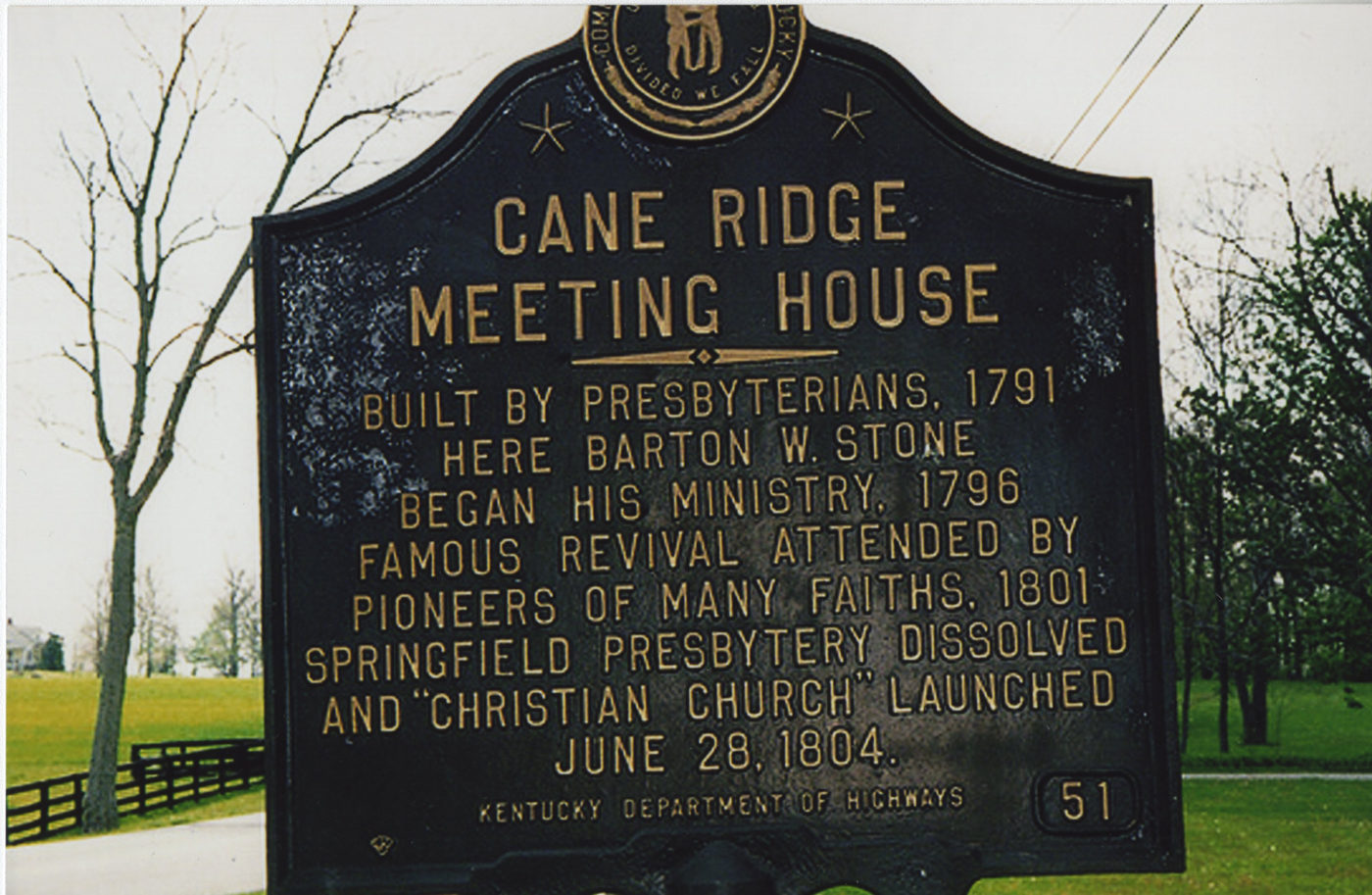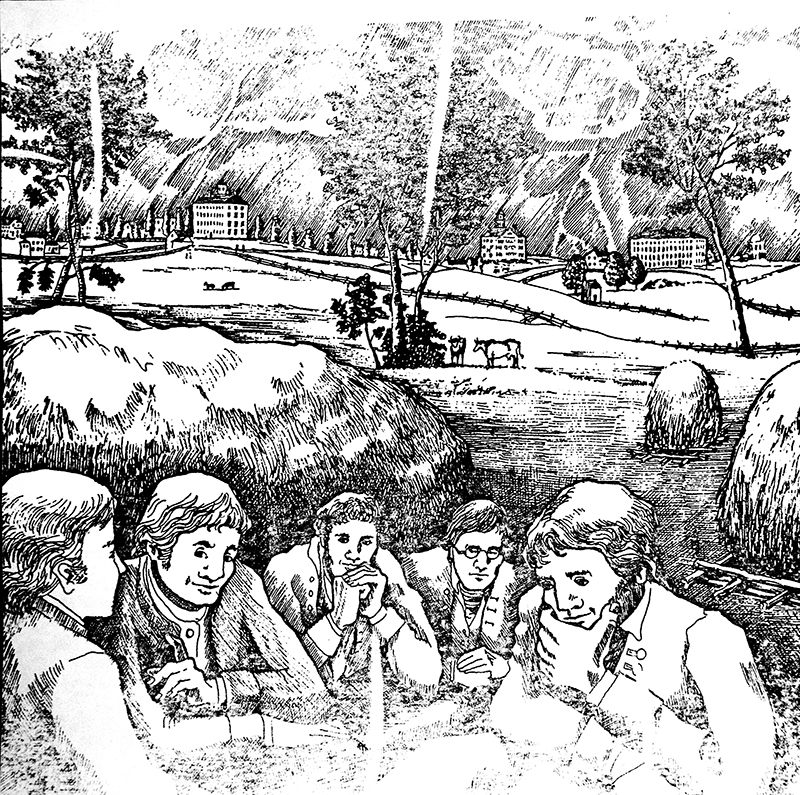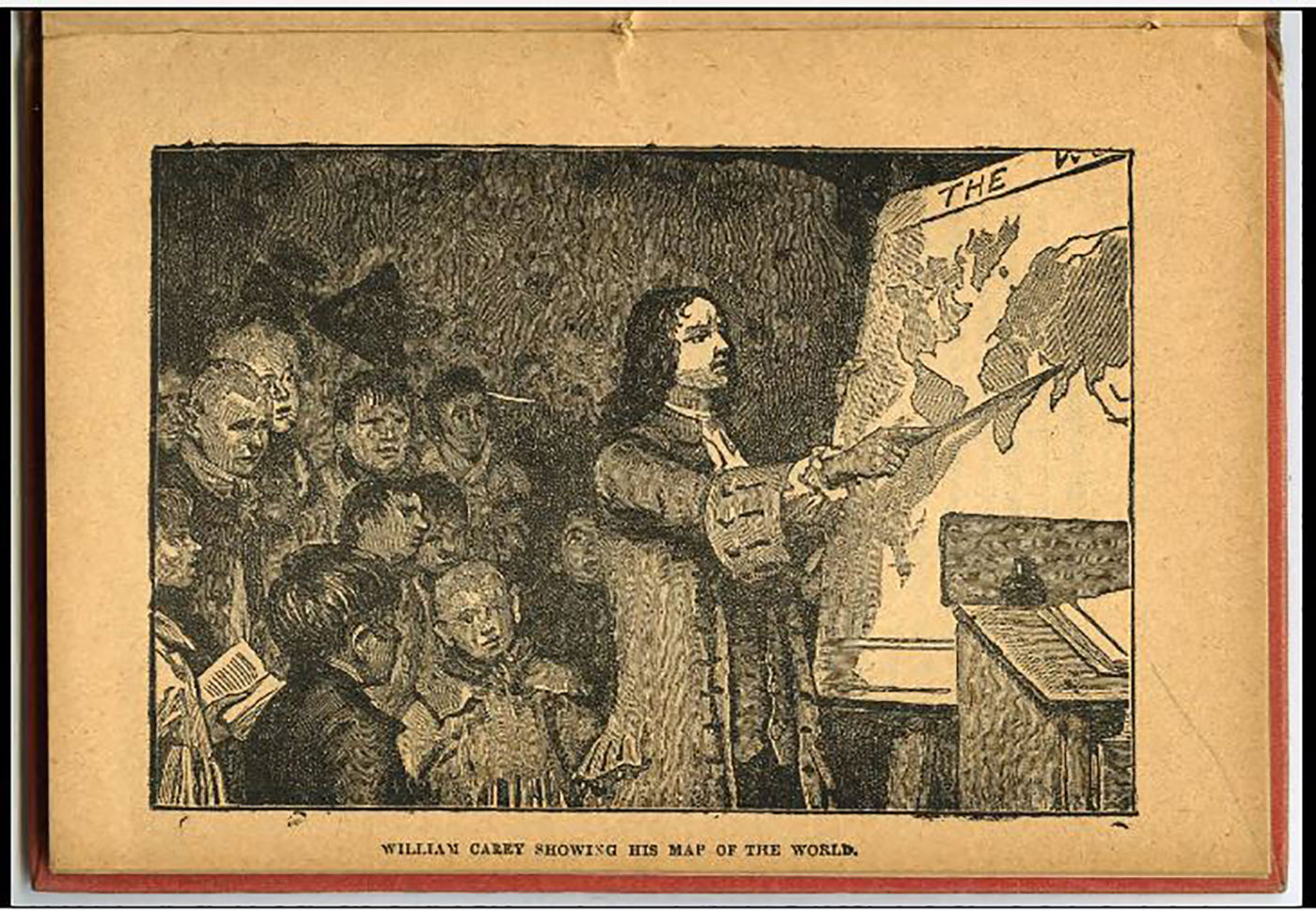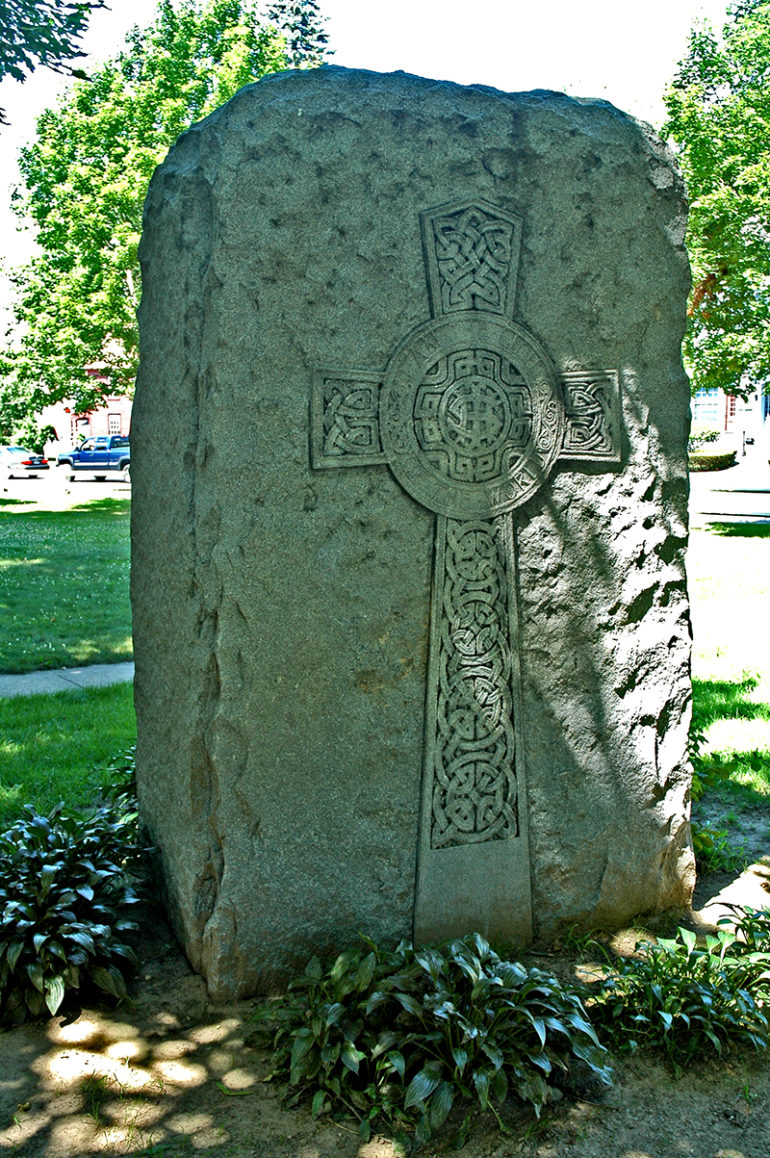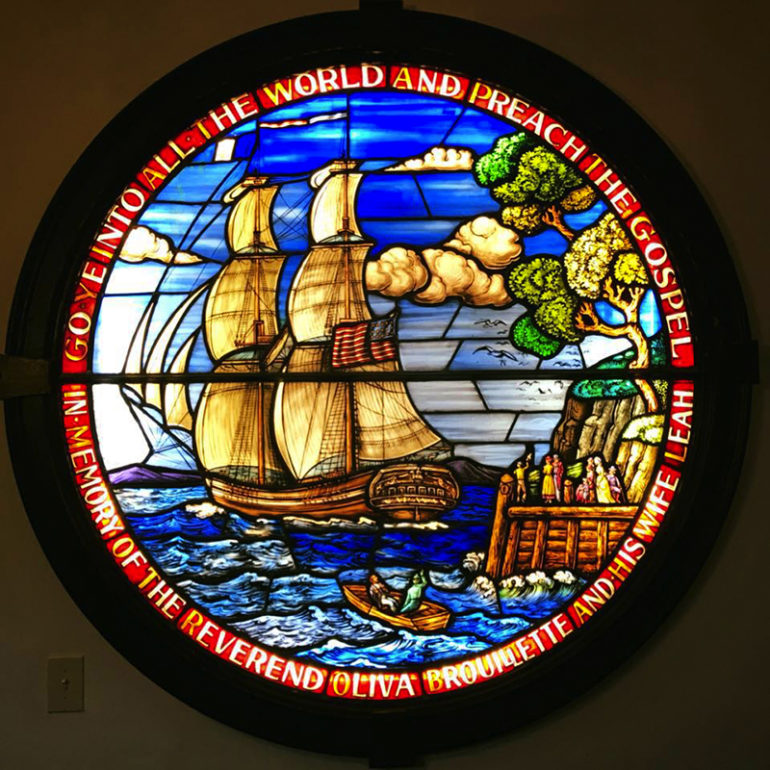The Second Great Awakening
From 1790 – 1830, a Protestant revival called the Second Great Awakening swept across America. The movement was a reaction to the loosened social bonds brought on by the nation’s westward expansion and beginning industrialization. Ministers traveled to cities and remote towns, preaching the equality of all before God and promoting an individual’s power to improve before Christ’s second coming. Their fiery sermons generated a tide of converts, notes historian Jill Lapore: “Before the revival began, a scant one in ten Americans were church members; by the time it ended, that ratio had risen to eight in ten.” 1 The Second Great Awakening, as a transformative American movement, also sparked far-reaching social reforms: the abolition of slavery, the temperance movement and the fight for women’s rights.
One young man helped propel the Second Great Awakening beyond America. While students at Williams College in August 1806, Samuel J. Mills, Jr. and four of his schoolmates met in a field near the school to debate “the salvation of the heathens” in Asia.2 A thunderstorm struck, forcing the young men to take refuge alongside a large haystack. Huddled against the driving rain, they prayed and sang a hymn, whereupon Mills declared, “We can do this, if we will!” 3 The five immediately pledged to spread the gospel to non-believers across America and abroad.
The Haystack Prayer Meeting inspired Mills to a life of action. He volunteered to tutor Henry ʻŌpūkahaʻia, Hawai‘i’s first Christian convert who had left the island aboard the trade ship Triumph and in 1809 was living in Connecticut. The two planned to head a mission back to Hawai‘i. Mills co-founded “The Brethren,”4 a band of influential seminarians who spurred the creation of the American Board of Commissioners for Foreign Missions (ABCFM) in 1810. Over the next half century, the ABCFM would send out 1,250 Congregationalist missionaries, including 184 to Hawai‘i.5 Unfortunately, both Mills and ʻŌpūkahaʻia died before they could realize their dream of leading a Hawai‘i mission. ʻŌpūkahaʻia died of typhus in 1818. Mills died that same year on a return trip from Africa.

— Maria W. Stewart, essayist and black adherent of the Second Great Awakening. 6

2“Heathen” was a commonly used term in the 19th century. The Merriam-Webster dictionary defines the term as “of or relating to people or nations that do not acknowledge the God of the Bible.”
3Samuel M. Worcester, in a semi-centennial anniversary address to the American Board of Commissions for Foreign Missions (ABCFM), 1860, as cited by Peter T. Young in his article “Haystack Prayer Meeting.”
4Richards, Thomas C., Samuel J. Mills: Missionary Pathfinder, Pioneer and Promoter, The Pilgrim Press, Boston, 1906.
5Young, Peter T., “Haystack Prayer Meeting,” 2017.
6Lapore, These Truths, p. 191.


